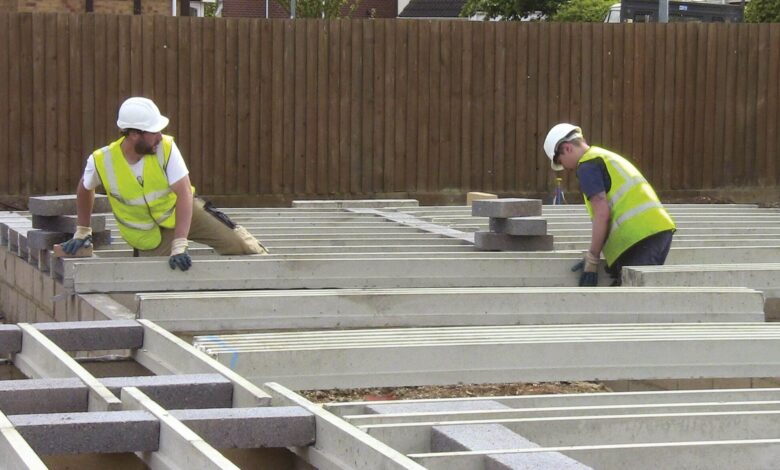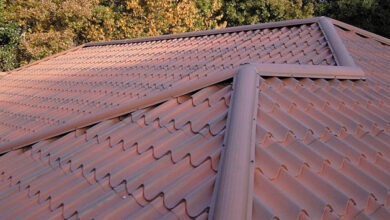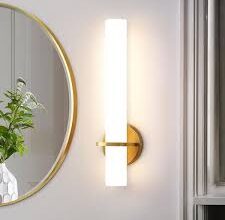The Ultimate Guide to Residential Floor Construction: Materials and Techniques

Building a home is an intricate process. And, one of the most critical elements is floor construction.
Floors not only serve as the foundation of your living space. They also play a significant role in the aesthetics, comfort, and functionality of your home.
This ultimate guide will explore various flooring materials and construction techniques to help you master residential floor construction.
So, let’s begin!
Materials for Residential Floor Construction
When it comes to building a home, choosing the right materials for your floors is crucial. Your floor not only needs to be durable and long-lasting. It also complements the overall design of your house.
In this section, we will discuss the different types of materials commonly used in residential floor construction and their unique characteristics. By understanding these materials, you can make an informed decision on which one best suits your needs and budget.
Hardwood
Hardwood floors are a popular choice for homeowners due to their classic and timeless look. They are made from different types of wood, such as oak, maple, and cherry, and come in various shades and patterns.
One of the main benefits of hardwood floors is their durability. They also add value to your home and can be refinished to give them a fresh new look.
However, hardwood floors can be expensive, and they are vulnerable to scratches and water damage. They also require regular maintenance to keep them looking their best.
Engineered Wood
Engineered wood floors are a more affordable alternative to hardwood floors. They are made by bonding layers of real wood with plywood or fiberboard, making them less prone to warping and moisture damage.
One advantage of engineered wood is its versatility. It can be installed in areas where solid hardwood cannot, such as basements and higher humidity environments.
However, engineered wood has a thinner top layer of real wood, making it less durable than hardwood. It also cannot be refinished multiple times.
Laminate
Laminate floors are synthetic flooring materials that mimic the look of natural materials like hardwood or stone. They are made by compressing layers of resin and fiberboard and topped with a high-resolution image of the desired material.
One major advantage of laminate floors is their cost-effectiveness. They are significantly cheaper than hardwood or engineered wood and can be easily installed over existing floors.
However, laminate floors cannot be refinished, and they are not as durable as hardwood or engineered wood. They also have a limited lifespan of around 15-25 years.
Vinyl
Vinyl floors are a popular choice for their affordability and durability. They are made from synthetic materials, such as PVC, and come in various designs and styles.
One major advantage of vinyl floors is their water resistance, making them ideal for areas prone to moisture, such as bathrooms and kitchens. They are also easy to clean and maintain.
However, vinyl floors can be prone to scratches and dents, and they are not as long-lasting as hardwood or engineered wood. So if you’d rather go for Premium PVC-Free Flooring, then that’s a possible choice too.
Tile
Tile floors are made from natural materials like ceramic, porcelain, or stone. They come in a wide range of colors, patterns, and sizes and can add a unique design element to your home.
One advantage of tile floors is their durability and resistance to water and stains. They are also easy to maintain and can last for decades.
However, tile floors can be expensive to install, and they can be cold to the touch. They also require professional installation to ensure proper placement and grouting.
Carpet
Carpet is a popular flooring choice for its comfort and affordability. It comes in various materials, such as wool, nylon, and polyester, and can add warmth to any room.
One major advantage of carpet is its cost-effectiveness. It is one of the most affordable flooring options and can be easily installed over existing floors.
However, carpet can be prone to stains and wear over time, and it requires regular cleaning and maintenance to keep it looking its best. It also has a shorter lifespan compared to other flooring materials.
Concrete
Concrete floors are a popular choice for its versatility and durability. They can be polished, stained, or stamped to create various designs and textures.
One advantage of concrete floors is their longevity. With proper sealing and maintenance, they can last for decades. They also provide excellent insulation and are ideal for homes in warmer climates.
However, concrete floors can be expensive to install, especially if you opt for decorative designs. They can also be cold and hard to the touch, making them less comfortable for bare feet.
Cork
Cork floors are a unique and eco-friendly choice for residential floor construction. They are made from the bark of cork oak trees and come in various colors and patterns.
One major advantage of cork floors is their sustainability. The extraction process does not harm the tree, making it an environmentally friendly option. Cork also provides excellent insulation and is comfortable to walk on.
However, cork floors can be prone to dents and scratches, and they require regular sealing to prevent moisture damage. They are also not suitable for high-traffic areas.
Bamboo
Bamboo floors are a popular choice for its sustainability and durability. They are made from bamboo grass, which is a fast-growing and renewable resource.
One major advantage of bamboo floors is their eco-friendliness. They also have similar characteristics to hardwood floors, such as durability and water resistance.
However, bamboo floors can be expensive, and they may not be suitable for homes in colder climates. They also require regular maintenance to prevent scratches and wear.
Linoleum
Linoleum floors are a popular choice for its eco-friendliness and durability. They are made from natural materials like linseed oil, recycled wood flour, and cork dust.
One major advantage of linoleum floors is their sustainability. They are biodegradable, making them an environmentally friendly option. They also come in various colors and patterns to suit any design aesthetic.
However, linoleum floors can be prone to scratches and dents, and they require regular maintenance to keep them looking their best. They are also not as durable as other flooring materials.
Techniques for Residential Floor Construction
Apart from choosing the right materials, there are various techniques used in residential floor construction to ensure a strong and durable foundation for your home. In this section, we will discuss some of the most common construction techniques and their unique benefits.
Subfloor Preparation
Proper subfloor preparation is crucial for any flooring material. It involves leveling the surface, ensuring it is free of debris and moisture, and installing a moisture barrier to prevent damage.
One advantage of proper subfloor preparation is that it creates a smooth and level surface for your chosen flooring material to be installed on. It also helps prevent issues such as warping, squeaking, and mold growth.
Moisture Barrier Installation
A moisture barrier is an essential part of floor construction, especially in areas prone to moisture. It can be a vapor barrier, which prevents moisture from seeping through the subfloor, or a waterproof membrane, which protects against water leaks.
One major advantage of installing a moisture barrier is that it helps prevent damage to your floors and subfloors caused by excess moisture. It also helps improve indoor air quality by preventing mold growth.
Underlayment Installation
Underlayment is a layer of material installed between the subfloor and the flooring material. It helps reduce noise, provides insulation, and acts as a cushion for your floors.
One major advantage of underlayment is its ability to improve the overall comfort and durability of your floors. It can also help reduce noise transfer between floors and provide additional insulation to keep your home energy-efficient.
Soundproofing is also a technique used to reduce noise transfer between floors in multi-level homes. The materials involved in the installation include acoustic underlayment, sound-absorbing carpets, and resilient channels. All these help absorb and block sound.
One major advantage of soundproofing is its ability to improve the overall comfort and privacy of your home. It can also increase property value and make your home more attractive to potential buyers.
Heating Systems
Heated floors are a popular choice for homeowners looking to improve the comfort and energy efficiency of their homes. It involves installing either electric or hydronic heating systems under the flooring material to provide warmth from the ground up.
One major advantage of heated floors is their ability to evenly distribute heat, making them more energy-efficient than traditional heating methods. It also eliminates cold spots and can help reduce heating costs in the long run.
Finishing and Maintenance
Proper finishing and maintenance are crucial for any flooring material. It involves sealing, sanding, and refinishing your floors to keep them looking their best.
One major advantage of proper finishing and maintenance is its ability to prolong the lifespan of your floors. It can also prevent damage caused by wear and tear, water, and UV rays.
Refer to This Ultimate Guide to Residential Floor Construction
Residential floor construction is a critical aspect of building a home. It not only provides a sturdy foundation. It also adds to the overall aesthetics and functionality of your living space.
By understanding the various materials and techniques used in residential floor construction, you can make an informed decision on which options best suit your needs and budget. Remember to properly prepare and maintain your floors to ensure their longevity and durability.




